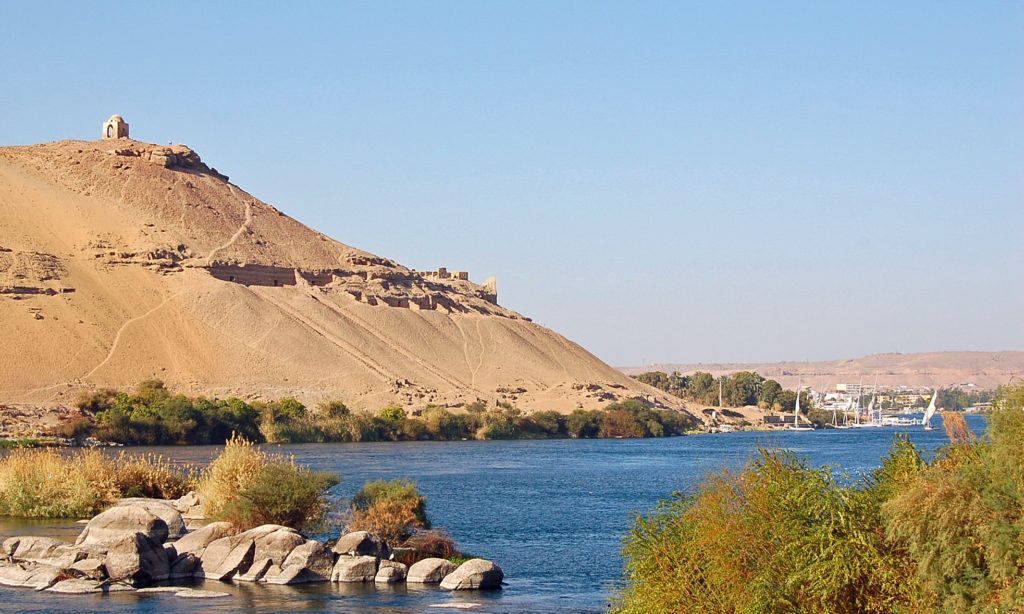
Aswan, Egypt, was once famous for the quality of its granite. Today, it is famous for the quality of its attractions.
In antiquity, Aswan was named Swenett. Situated at the Nile’s first cataract, one of six granite outcroppings in the river, it marked Egypt’s southern boundary with Nubia. Swenett was the site of granite quarries, where artisans carved the obelisks needed for temples near Luxor. One important site in Aswan today is the unfinished obelisk, abandoned in situ when carvers discovered a crack. It is still not entirely clear how workers extracted the enormous obelisks from their quarries, transported them more than a hundred miles downriver and erected them at the temples.
Aswan is the site of the Aswan High Dam, erected between 1960 and 1970 to control the flooding of the Nile. The dam is more than two miles long and 364 feet high, creating 300-mile-long Lake Nasser. Nearby is a wonderfully preserved temple to Isis, originally built by the Greeks on the Island of Philae and moved to higher ground to escape the waters of Lake Nasser. Feluccas, graceful traditional boats propelled by both oars and sails, take visitors to the temple and other sites along the river, including Elephantine Island, reportedly once the site of a Jewish temple and now the site of a Nubian village. At night, Aswan’s famous spice market, which sells much more than spices, teems with visitors, who can engage horse-drawn carriages for trips around the city.
Aswan was the favorite city of Aga Khan III, born in what is now Pakistan and the president of the League of Nations in 1937. He is entombed in a mausoleum atop a hill overlooking the Nile, providing a magnificent view of Aswan and the river. Many visitors to Egypt never make it to Aswan. Don’t make that mistake.
Comments are closed.